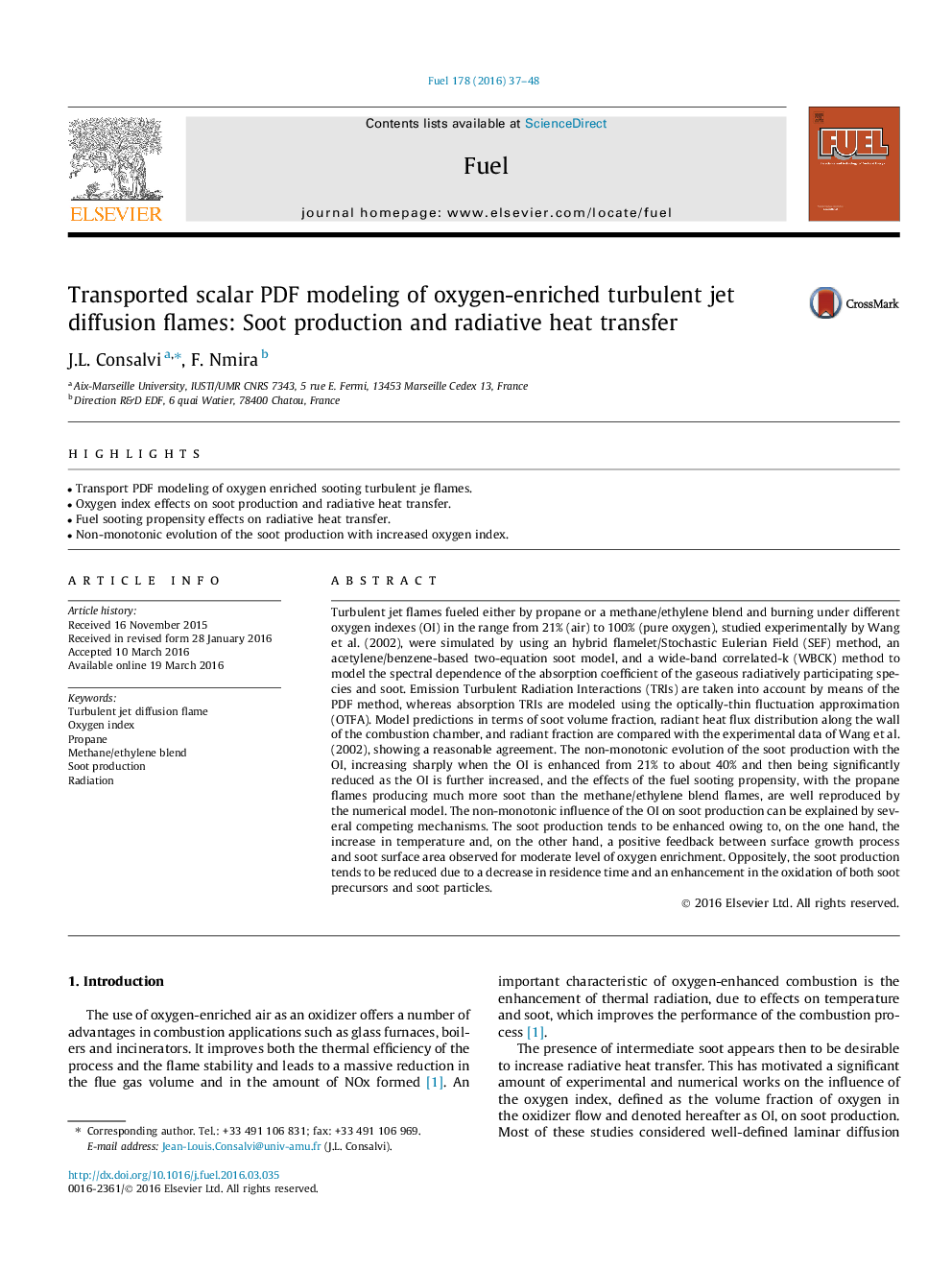| Article ID | Journal | Published Year | Pages | File Type |
|---|---|---|---|---|
| 204995 | Fuel | 2016 | 12 Pages |
•Transport PDF modeling of oxygen enriched sooting turbulent je flames.•Oxygen index effects on soot production and radiative heat transfer.•Fuel sooting propensity effects on radiative heat transfer.•Non-monotonic evolution of the soot production with increased oxygen index.
Turbulent jet flames fueled either by propane or a methane/ethylene blend and burning under different oxygen indexes (OI) in the range from 21% (air) to 100% (pure oxygen), studied experimentally by Wang et al. (2002), were simulated by using an hybrid flamelet/Stochastic Eulerian Field (SEF) method, an acetylene/benzene-based two-equation soot model, and a wide-band correlated-k (WBCK) method to model the spectral dependence of the absorption coefficient of the gaseous radiatively participating species and soot. Emission Turbulent Radiation Interactions (TRIs) are taken into account by means of the PDF method, whereas absorption TRIs are modeled using the optically-thin fluctuation approximation (OTFA). Model predictions in terms of soot volume fraction, radiant heat flux distribution along the wall of the combustion chamber, and radiant fraction are compared with the experimental data of Wang et al. (2002), showing a reasonable agreement. The non-monotonic evolution of the soot production with the OI, increasing sharply when the OI is enhanced from 21% to about 40% and then being significantly reduced as the OI is further increased, and the effects of the fuel sooting propensity, with the propane flames producing much more soot than the methane/ethylene blend flames, are well reproduced by the numerical model. The non-monotonic influence of the OI on soot production can be explained by several competing mechanisms. The soot production tends to be enhanced owing to, on the one hand, the increase in temperature and, on the other hand, a positive feedback between surface growth process and soot surface area observed for moderate level of oxygen enrichment. Oppositely, the soot production tends to be reduced due to a decrease in residence time and an enhancement in the oxidation of both soot precursors and soot particles.
